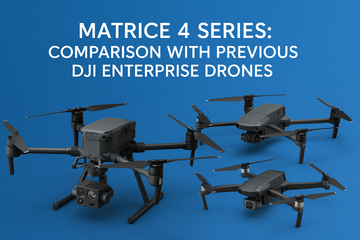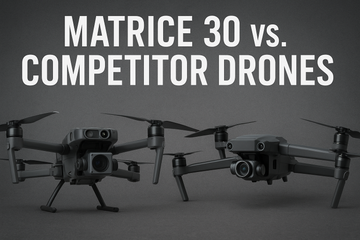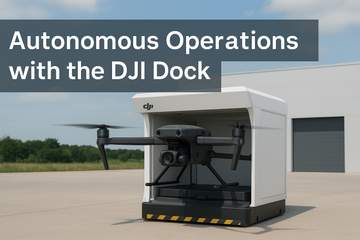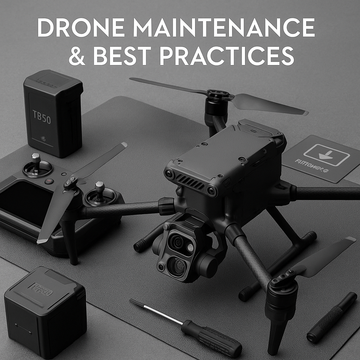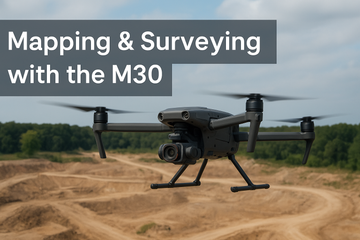Introduction
DJI has set the standard for enterprise drones, but each new generation raises the bar. For users of the Mavic 3 Enterprise or Matrice 30 Series, the arrival of the Matrice 4 Series brings significant upgrades in performance, imaging, and intelligent features. If you’re weighing whether to upgrade, this breakdown highlights exactly how the Matrice 4 Series outperforms its predecessors.
Flight Performance
-
Matrice 4 Series: Up to 49 minutes of flight time—one of the longest in its class. This extended endurance allows more ground to be covered in fewer missions.
-
Matrice 30 Series: Offers 41 minutes of flight time, strong for its generation but shorter than the M4’s endurance.
-
Mavic 3 Enterprise: Around 45 minutes, but with smaller batteries and payload restrictions.
👉 For large-area surveys, emergency response, or extended inspections, the Matrice 4 Series provides clear efficiency gains.
Payload Improvements
Matrice 4 Series
-
Matrice 4T: Multi-sensor payload (wide, telephoto, medium-tele, thermal camera, and laser rangefinder).
-
Matrice 4E: High-precision 20MP wide-angle camera with mechanical shutter and Smart 3D Capture for mapping.
Matrice 30 Series
-
Dual-sensor system with zoom and wide-angle, plus thermal option in the M30T. Strong but lacks the advanced mechanical shutter and Smart 3D Capture.
Mavic 3 Enterprise
-
Compact design with mapping and thermal variants, but a single payload per model. Suitable for lighter operations, though less versatile than the Matrice 4 Series.
👉 The Matrice 4 Series consolidates multiple high-end sensors into one platform, reducing the need for multiple drone types.
Intelligent Features
-
Matrice 4 Series:
-
AI Spot Check and Smart 3D Capture for dynamic mapping.
-
Advanced object detection and tracking with AI assistance.
-
Improved low-light ISO performance (up to 819,200 on tele cameras).
-
-
Matrice 30 Series: Strong AI features, including mapping and inspection automation, but fewer advanced modeling tools.
-
Mavic 3 Enterprise: Includes RTK accuracy and mapping features, but lacks Smart 3D Capture and advanced AI-assisted workflows.
👉 For professionals in surveying and modeling, the Matrice 4E’s Smart 3D Capture is a major leap forward. For public safety, the 4T’s thermal + AI combination goes beyond what the M30T offered.
Who Should Upgrade?
-
Mavic 3 Enterprise users: Upgrade to the Matrice 4 Series if you need longer endurance, multiple sensors in one aircraft, and AI-driven mapping tools.
-
Matrice 30 Series users: Upgrade if your operations demand thermal + mapping versatility in one platform, or if you need maximum flight efficiency.
-
First responders and surveyors: Both groups benefit from precision imaging, faster mission planning, and all-in-one versatility.
Conclusion
The DJI Matrice 4 Series sets a new benchmark for enterprise drones. With its extended flight time, advanced payloads, and smarter AI tools, it’s a worthy upgrade for professionals who need efficiency, flexibility, and future-proof capabilities. For operators currently using the Mavic 3 Enterprise or Matrice 30 Series, the jump to the Matrice 4 Series offers not just incremental improvements—but a true transformation in workflows.
#DJIMatrice4 #DJIEnterprise #Matrice30 #Mavic3Enterprise #DroneComparison #EnterpriseDrones #DroneTechnology #PublicSafetyDrones #MappingDrones #Surveying


